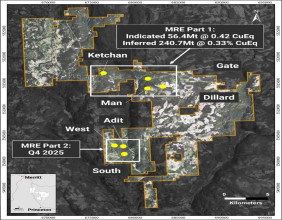Highlights
- Uses straight-line depreciation for shareholder reports and accelerated depreciation for tax.
- Reflects lower income taxes on financial statements due to tax benefits.
- Enhances cash flow visibility while maintaining shareholder transparency.
Introduction
The flow-through method is a strategic approach used in financial reporting that involves the simultaneous application of two different depreciation methods—straight-line depreciation for shareholder reports and accelerated depreciation for tax purposes. This method allows companies to leverage tax benefits while maintaining transparent financial reporting. By "flowing through" the actual lower income taxes paid into the financial statements, companies can provide a more accurate representation of their cash flows without compromising the integrity of their shareholder reports.
Understanding Depreciation Methods
Depreciation is an accounting technique used to allocate the cost of a tangible asset over its useful life. Two commonly used methods are:
- Straight-Line Depreciation: This method spreads the cost of an asset evenly over its useful life, resulting in consistent annual expenses.
- Accelerated Depreciation: This approach allows for higher depreciation expenses in the earlier years of an asset's life, reducing taxable income more significantly during those years.
How the Flow-Through Method Works
The flow-through method utilizes straight-line depreciation for financial reporting to shareholders, ensuring a steady expense pattern that aligns with investor expectations for profitability and stability. However, for tax purposes, the company applies accelerated depreciation, taking advantage of the increased deductions available in the earlier years. The tax savings generated by the accelerated method are then "flowed through" to the financial statements. This results in lower reported income taxes, which enhances cash flow visibility while preserving the accuracy and transparency of the financial report.
Benefits of the Flow-Through Method
- Tax Efficiency: By using accelerated depreciation for tax filings, companies can reduce their taxable income and, consequently, their tax liabilities.
- Enhanced Cash Flow: The tax savings obtained through accelerated depreciation improve cash flow, which can be reinvested in the business.
- Financial Transparency: Using straight-line depreciation in shareholder reports maintains consistent and predictable expense reporting, supporting investor confidence.
Challenges and Considerations
While the flow-through method offers several advantages, it also presents some challenges:
- Complexity in Reporting: Managing dual depreciation schedules requires precise record-keeping and can increase the complexity of financial reporting.
- Temporary Tax Differences: Since accelerated depreciation results in higher expenses in the earlier years, it creates temporary differences between book income and taxable income. These differences must be carefully managed to ensure compliance with accounting standards.
- Potential for Misinterpretation: Investors and analysts may misinterpret the lower reported income taxes, mistaking them for permanent tax reductions rather than temporary deferrals.
Comparison with Other Methods
Compared to the deferred method, which defers the tax benefits over the asset’s life, the flow-through method is more transparent about the immediate tax advantages. This direct approach enhances cash flow visibility, allowing shareholders to better understand the company’s financial health. However, the deferred method can be more straightforward to manage, as it aligns the tax impact more closely with the actual depreciation expense recognized in financial reports.
Practical Application and Examples
The flow-through method is particularly useful for capital-intensive industries where assets depreciate quickly, such as manufacturing, energy, and technology sectors. For example, a tech company purchasing advanced equipment might use accelerated depreciation to reduce taxable income in the initial years, reflecting the rapid obsolescence of technology assets, while reporting steady expenses to shareholders.
Conclusion
The flow-through method is an effective financial reporting strategy that balances tax efficiency with shareholder transparency. By using straight-line depreciation for shareholder reports and accelerated depreciation for tax purposes, companies can take advantage of tax benefits while maintaining a consistent and reliable financial narrative. Although this method adds complexity to financial reporting, it provides enhanced cash flow visibility and supports strategic reinvestment. Organizations considering this approach should weigh the benefits against the reporting challenges and ensure transparent communication with investors.



